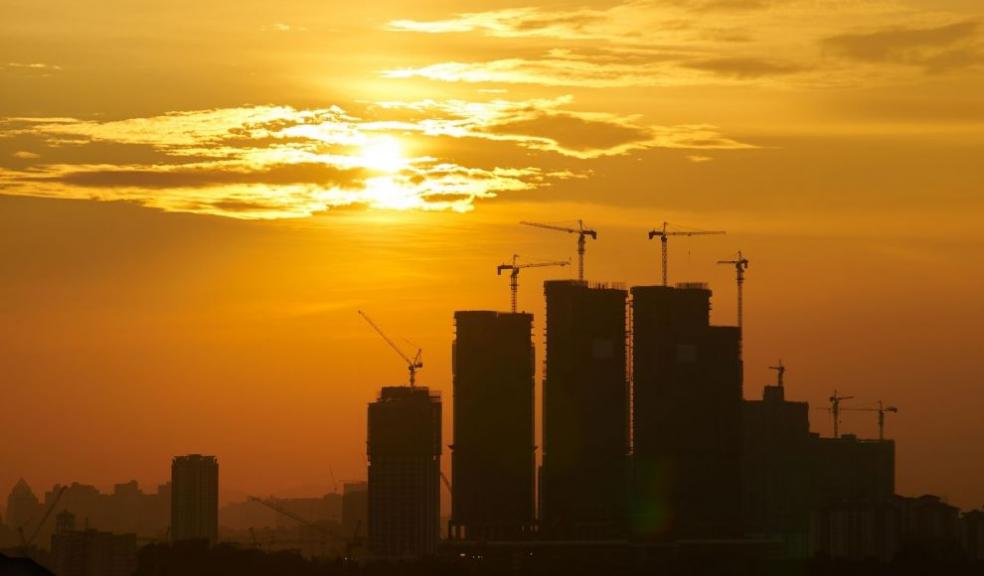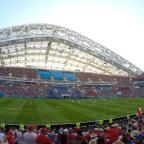
Have we fallen out of love with flats since Grenfell?
Since the Grenfell disaster in June 2017 and the ongoing scandal around unsafe cladding that has followed, it’s perhaps understandable that many buyers within the market have remained cautious about living in flats.
The latest research by London lettings and estate agent, Benham and Reeves, has found that this caution has caused both price growth and transactions for flats to lag behind when compared to the overall UK market and the appetite for other property types. However, there are positive signs that this is now changing.
Market movement immediately after Grenfell
The research shows that across England and Wales, the rate of house price growth for flats ground to a halt in the wake of the Grenfell disaster. Flat values sat at 0% between 2017 and 2018 versus a 1.8% overall uplift in house prices across the wider market and a 2.5% to 2.7% uplift for detached and semi-detached homes respectively.
This trend was, of course, more pronounced in London, with flats falling by -1.6% during the same period.
There is no doubt that the primary cause of this price decline was a reduction in demand for flats. When analysing transactions during the same year, the figures show that the overall number of properties sold fell by -1.8% across England and Wales between 2017 and 2018, however sales specifically regarding flats fell by a more notable -5.2%.
Again, in London, this increase grew to -7.6% versus a decline of -5.6% across the overall London market.
Market movement since Grenfell
In the three years since the Grenfell tragedy, the average price for flats across England and Wales has increased by just 1.2% a year. This is the lowest average annual rate of growth of all property types by some margin, with detached, semi and terraced homes averaging between 4.3% and 4.5% a year. In London, the average value of flats has crept up by just 0.1% a year on average since 2017 compared to a 1.3% increase across the London market as a whole.
Since 2017, transactions for all property types have fallen at an average of -15.1% a year. However, this falls further to an average yearly decline of -19.9% for transactions specifically for flats. In London, the sale of flats has fallen by -20% a year versus between -9% and -12% for other property types.
Is the tide turning?
With lockdown causing many to look to bigger homes, it’s hardly surprising that the number of flats sold fell -19.9% between 2019 and 2020.
However, there is a glimmer of hope for flat homeowners, with the average price of flat properties in England and Wales climbing a healthy 4.5% in the last year.
A wealth of stock and lower prices also means that flats are also presenting great opportunities for homebuyers to get a more affordable first foot on the ladder, whilst also tempting landlords due to the more favourable yields.
Director of Benham and Reeves, Marc von Grundherr, commented:
“A tragedy on the scale of the Grenfell disaster and the cladding scandal that followed will understandably have an impact on homebuyer confidence that reaches far beyond the capital.
This impact is clear when analysing the market for flats on a national scale both from a transactional standpoint and in terms of the rate of house price growth, with both declining pretty consistently since 2017.
However, the government’s commitment to right the wrongs of unsafe cladding on such buildings has helped to settle the market, with a spotlight on the A1 EWS1 safety certification also helping to reassure buyers.
High-quality developments are now reaching the market built to this high safety standard and we’re starting to see a rapid reversal in negative price trends for flats, with strong growth in the last year, despite the increased demand for bigger homes as a result of lockdown restrictions.
The good news is that the A1 EWS1 certification isn’t confined to new developments alone. There are plenty of existing developments already built to this extremely high standard available on the market now.”
Data on house prices sourced from the gov.uk UK House Price Index.
Data on transactional volumes sourced from the Land Registry Sale Records
|
Annual and Average Annual Change in Property Value in England & Wales |
||||||
|
Location |
2015 to 2016 (%) |
2016 to 2017 (%) |
2017 to 2018 (%) |
2018 to 2019 (%) |
2019 to 2020 (%) |
Average Annual Change (%) |
|
All Property Types |
5.5% |
4.5% |
1.8% |
0.8% |
8.6% |
3.8% |
|
Flats |
6.8% |
3.3% |
0.0% |
-0.9% |
4.5% |
1.2% |
|
Detached |
5.4% |
4.4% |
2.5% |
0.7% |
10.2% |
4.5% |
|
Semi-Detached |
5.3% |
5.3% |
2.7% |
1.2% |
9.0% |
4.3% |
|
Terraced |
5.0% |
4.8% |
1.7% |
1.6% |
9.4% |
4.3% |
|
|
|
|
|
|
|
|
|
Annual and Average Annual Change in Transactional Volume in England and Wales |
||||||
|
Location |
2015 to 2016 (%) |
2016 to 2017 (%) |
2017 to 2018 (%) |
2018 to 2019 (%) |
2019 to 2020 (%) |
Average Annual Change (%) |
|
All Property Types |
0.9% |
-2.3% |
-1.8% |
-2.3% |
-41.1% |
-15.1% |
|
Flats |
3.8% |
-9.3% |
-5.2% |
-6.3% |
-48.1% |
-19.9% |
|
Detached |
0.5% |
0.0% |
-1.7% |
-1.3% |
-40.9% |
-14.6% |
|
Semi-Detached |
2.3% |
2.9% |
0.1% |
-0.5% |
-39.8% |
-13.4% |
|
Terraced |
-1.9% |
-3.6% |
-1.4% |
-2.3% |
-37.9% |
-13.9% |
|
|
|
|
|
|
|
|
|
Annual and Average Annual Change in Property Value in London |
||||||
|
Location |
2015 to 2016 (%) |
2016 to 2017 (%) |
2017 to 2018 (%) |
2018 to 2019 (%) |
2019 to 2020 (%) |
Average Annual Change (%) |
|
All Property Types |
5.0% |
0.9% |
-0.8% |
1.2% |
3.5% |
1.3% |
|
Flats |
5.3% |
0.5% |
-1.6% |
0.8% |
1.2% |
0.1% |
|
Detached |
5.0% |
1.4% |
0.0% |
1.0% |
5.6% |
2.2% |
|
Semi-Detached |
4.8% |
1.9% |
1.2% |
0.8% |
5.5% |
2.5% |
|
Terraced |
4.4% |
1.3% |
0.2% |
2.5% |
6.7% |
3.1% |
|
|
|
|
|
|
|
|
|
Annual and Average Annual Change in Transactional Volume in London |
||||||
|
Location |
2015 to 2016 (%) |
2016 to 2017 (%) |
2017 to 2018 (%) |
2018 to 2019 (%) |
2019 to 2020 (%) |
Average Annual Change (%) |
|
All Property Types |
-7.9% |
-7.5% |
-5.6% |
-3.0% |
-39.4% |
-16.0% |
|
Flats |
-3.8% |
-9.9% |
-7.6% |
-5.7% |
-46.8% |
-20.0% |
|
Detached |
-14.5% |
-6.5% |
-1.8% |
1.1% |
-25.4% |
-8.7% |
|
Semi-Detached |
-12.9% |
-0.1% |
-3.2% |
2.7% |
-30.1% |
-10.2% |
|
Terraced |
-13.1% |
-5.6% |
-2.8% |
-0.7% |
-31.5% |
-11.6% |









